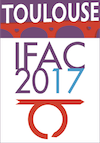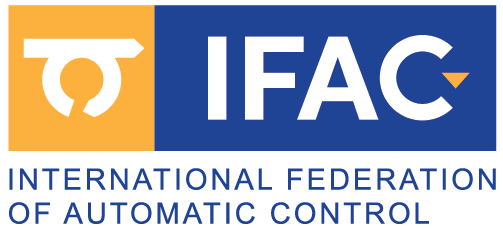Three new open invited tracks !
Diagnosis Techniques on Discrete Event Systems
Intelligent decision systems in the wood-products industry
Control of Airborne Wind Energy Systems
Title: Diagnosis Techniques on Discrete Event Systems
Track proposed by: Mohamed Ghazel, Dimitri Lefebvre, Shigemasa Takai
Abstract: This open invited track aims to bring together researchers working on the diagnosis of discrete event systems. The track offers an opportunity to present the recent results and applications regarding model-based diagnosis techniques with various related issues: diagnosability analysis, online diagnosis, state estimation, etc.
Code for submitting contributions: t38qn
Title: Intelligent decision systems in the wood-products industry
Track proposed by: A. Thomas
Abstract: The wood-products industry is subject to major uncertainties coming from dynamic product innovation, volatile markets, and wood material quality variations. These characteristics lead to specific decision processes which have to take into account not only demand but also quality, material, and temporal variabilities. Moreover, the inherent divergent production processes also induce specificities in decision processes. This open invited track is aimed at decision, innovation, and quality control processes relative to the first and the second wood transformation processes, from wood supply to final products distribution.
Code for submitting contributions: 5767b
Title: Control of Airborne Wind Energy Systems
Track proposed by: A. Hably, A. Trofino, M. Diehl, L. Fagiano
Abstract: Airborne wind energy is an emerging field in the landscape of innovative renewable energy systems that has experienced an ever-increasing development in the last decade. Today, a thriving multi-disciplinary community of researchers and technologists in academia and industry all over the world is well-established. The delivered research results are gradually assessing and eliminating feasibility risks and improving our understanding of airborne wind energy systems, ultimately bringing these concepts closer and closer to industrialization. The claimed advantages of these systems are lower installation costs, higher capacity factors, higher density of generated power per unit area of occupied land, and higher flexibility with respect to the current established renewable technologies, up to a level that could render airborne wind energy competitive with fossil fuels without the need for political and economic incentives. Airborne wind energy is also an umbrella name for a series of different technologies, which all share the peculiarity that the energy-harvesting component of the system is not supported by a static, rigid structure, rather it is linked to the ground by tethers and kept airborne by means of automatic control systems. Indeed, a common aspect of all airborne wind energy systems is the crucial role played by control, in its broader sense. Modeling, identification, estimation, control and optimization methods are enabling the development of this field, which at the same time is presenting new challenges to the controls community. The goal of this open track session at the 2017 IFAC World Congress is to bring together researchers from industry and academia to present and share their latest advancements and discuss the current and future research and development needs in this timely and thriving field.
Code for submitting contributions: t167v






























